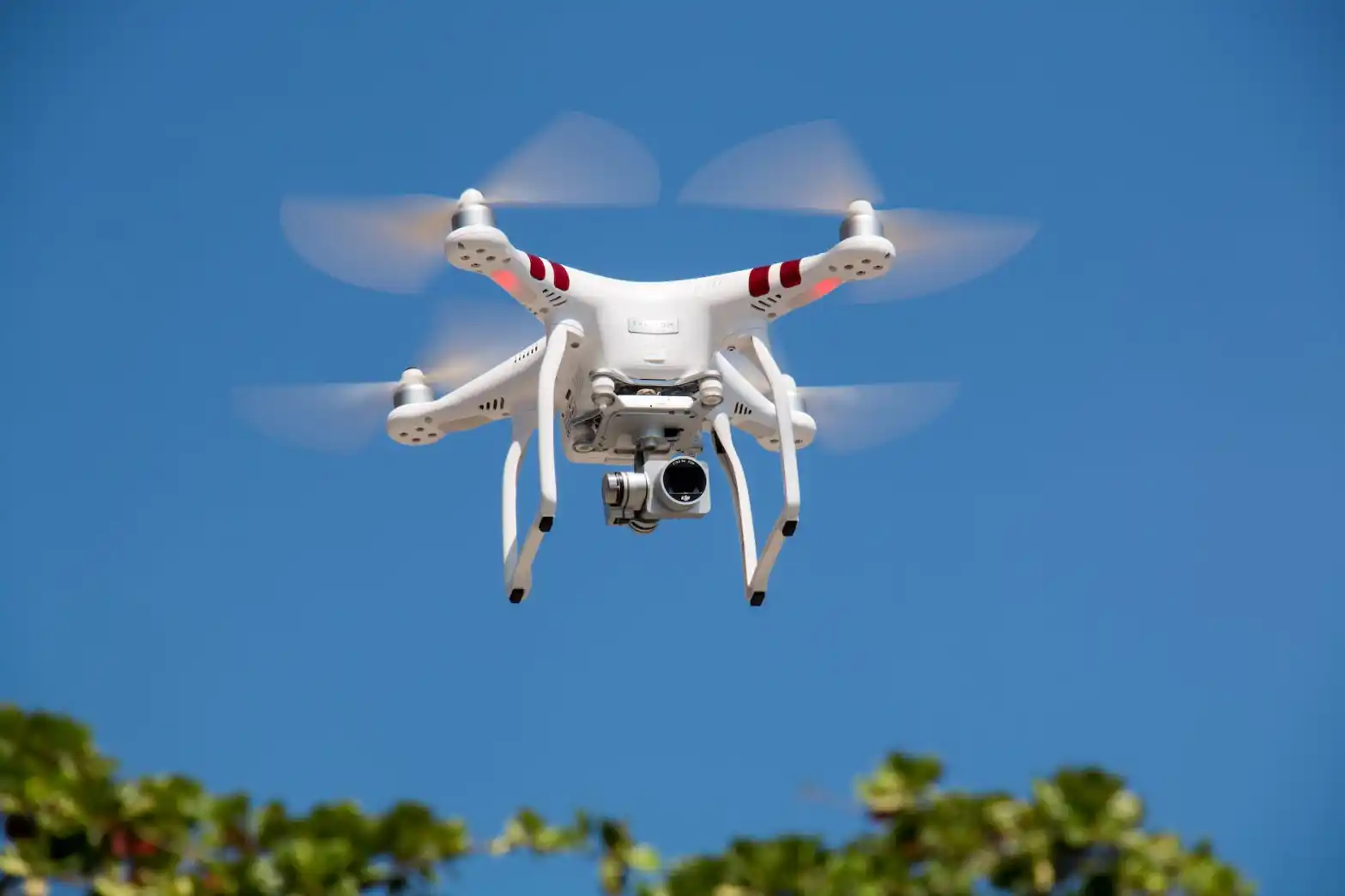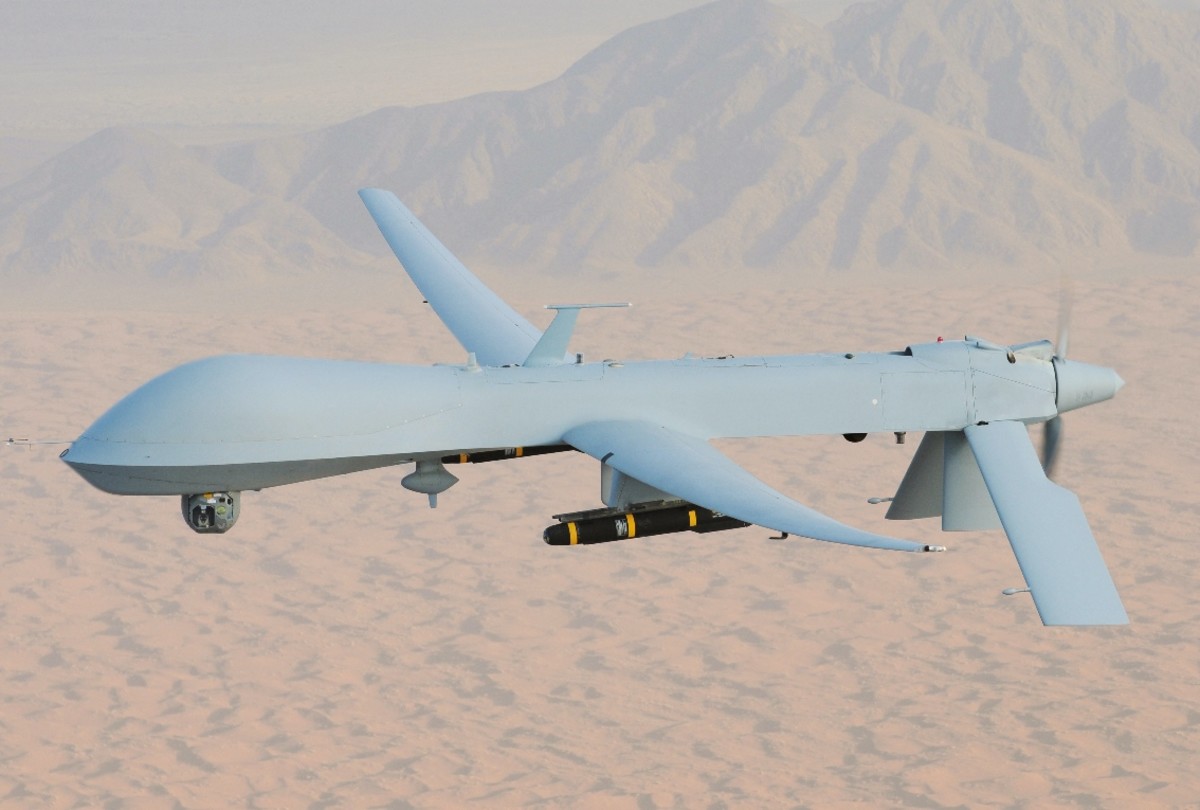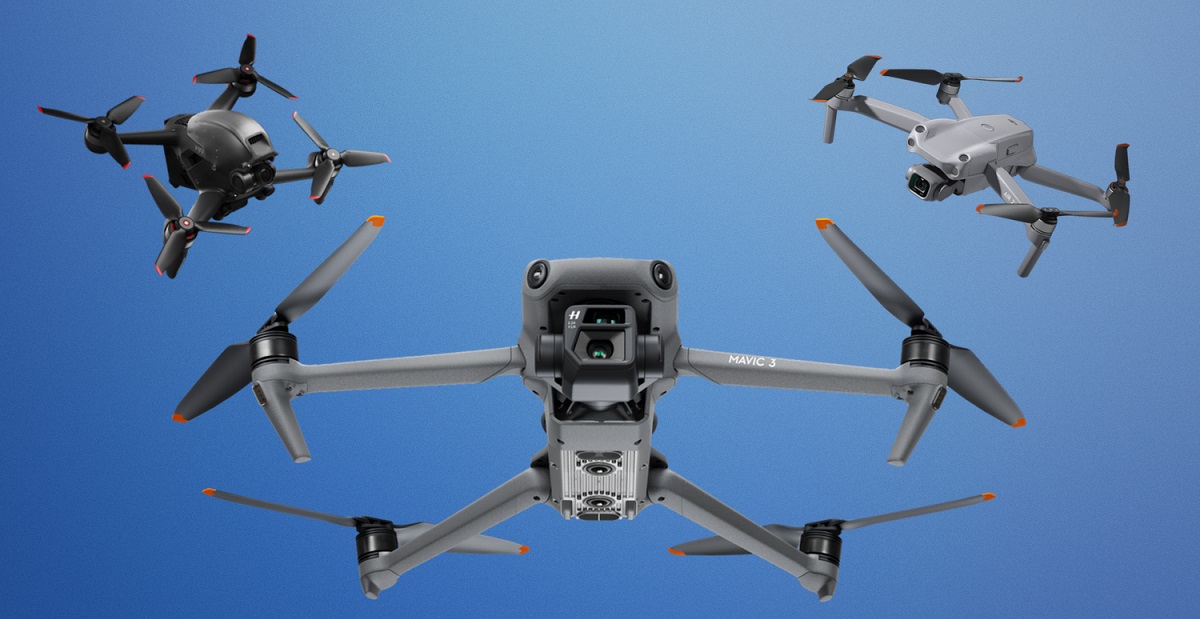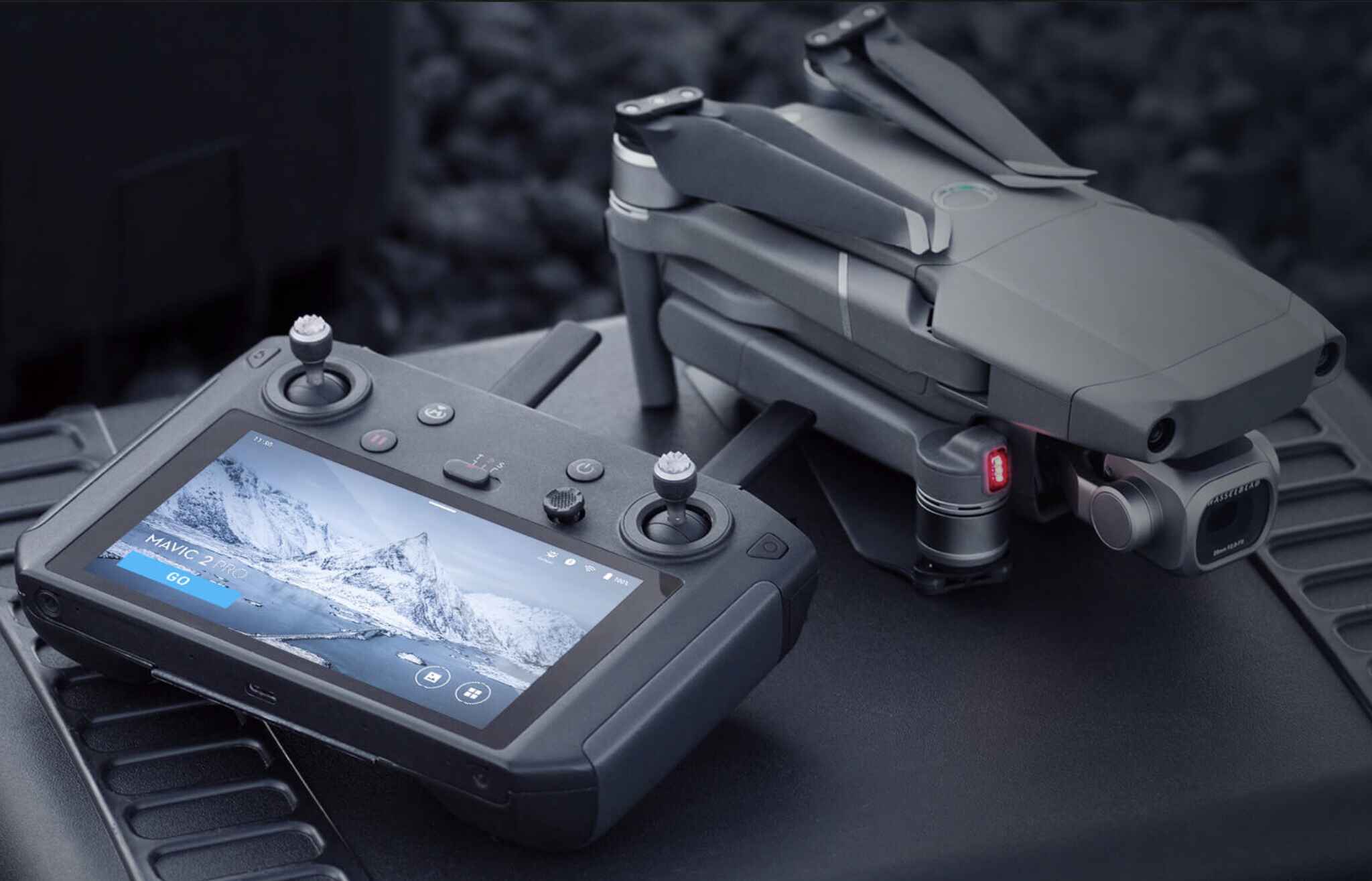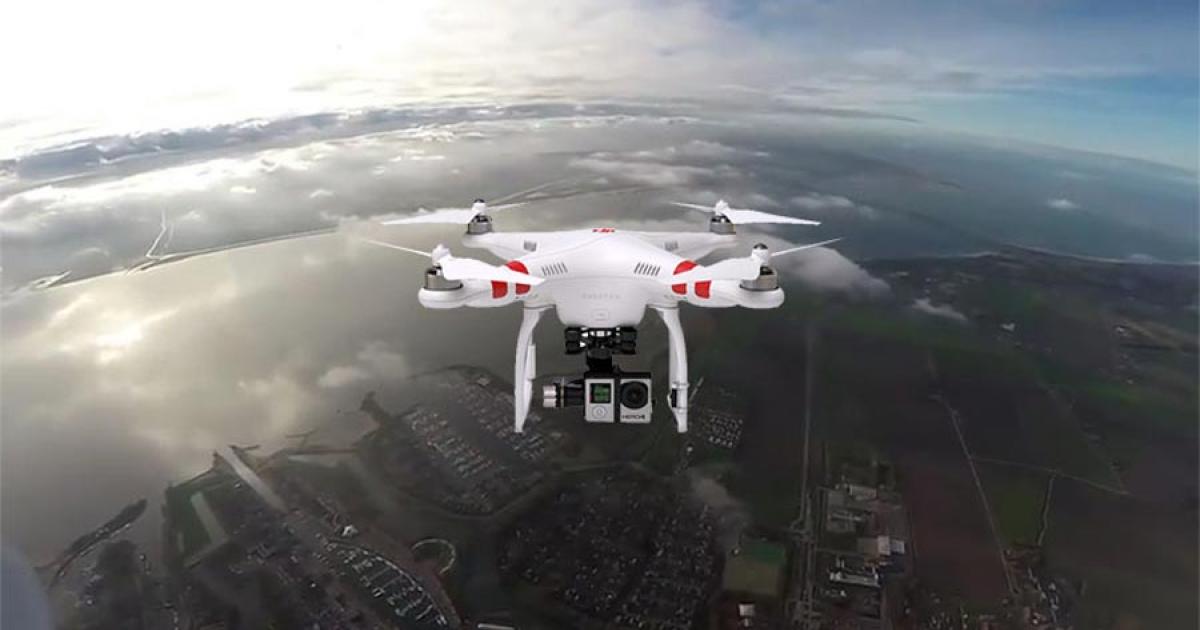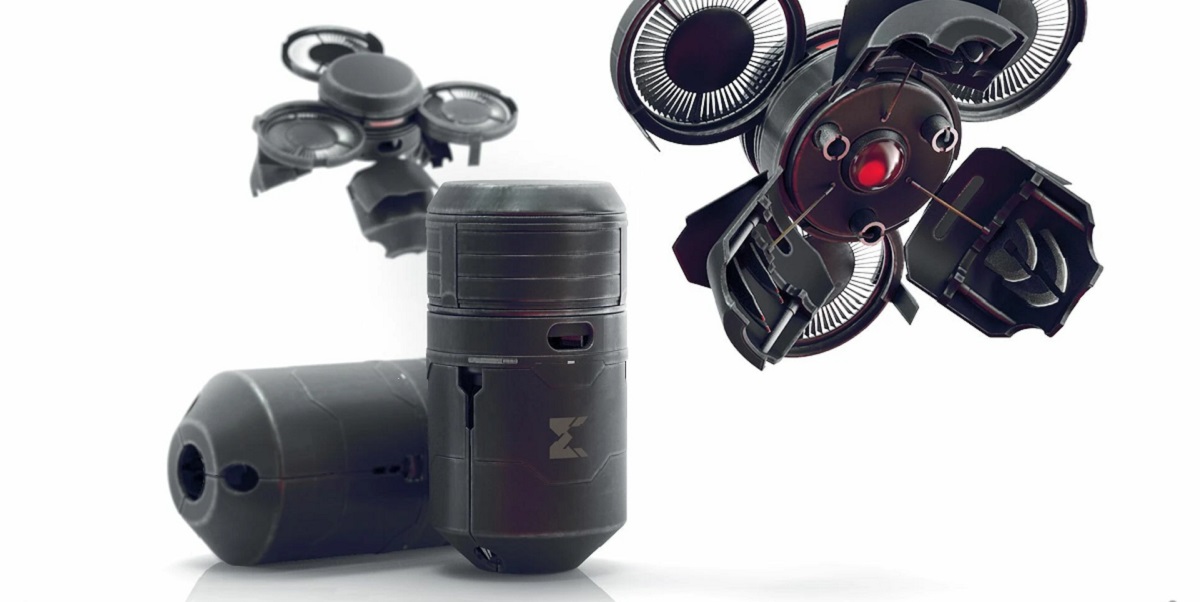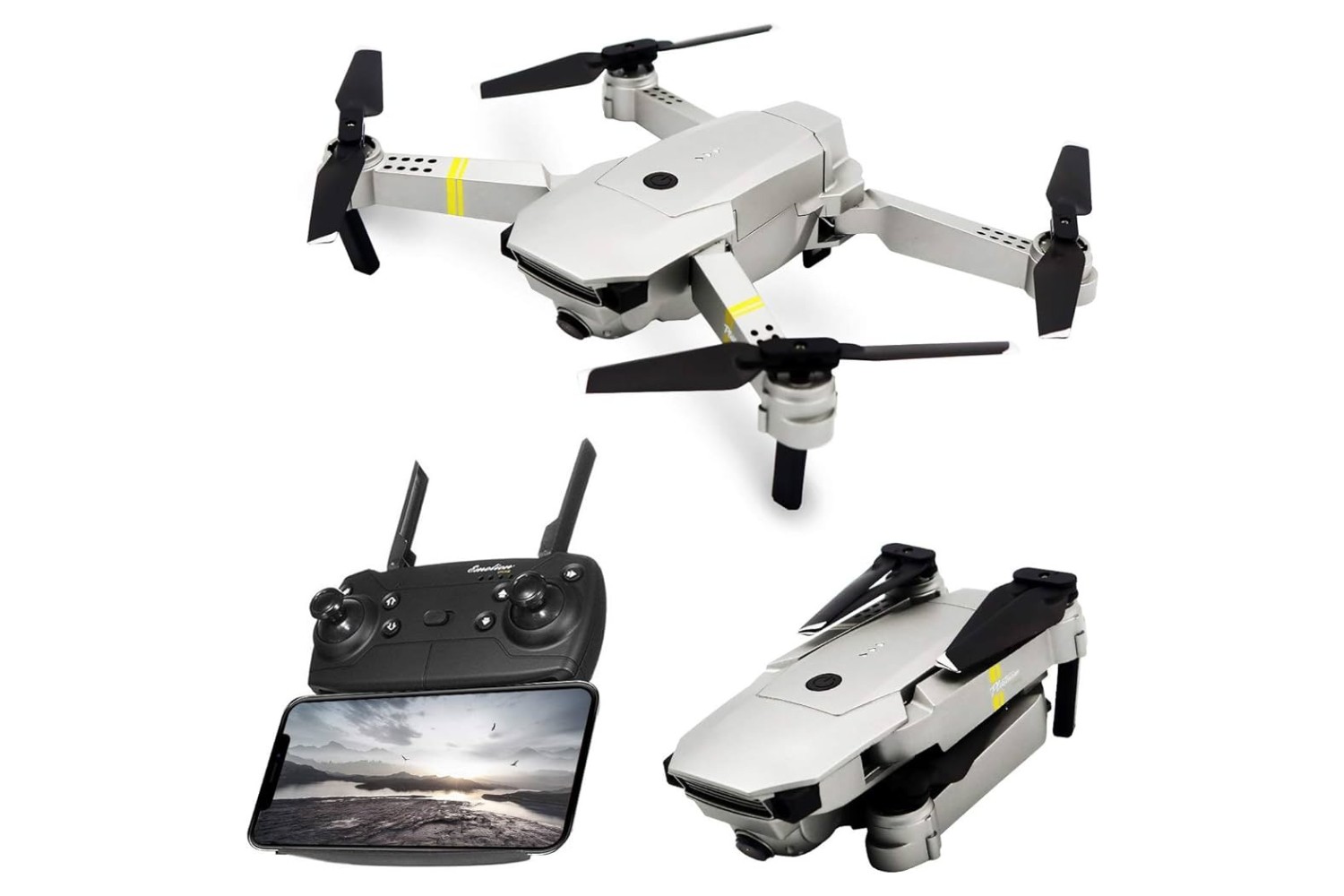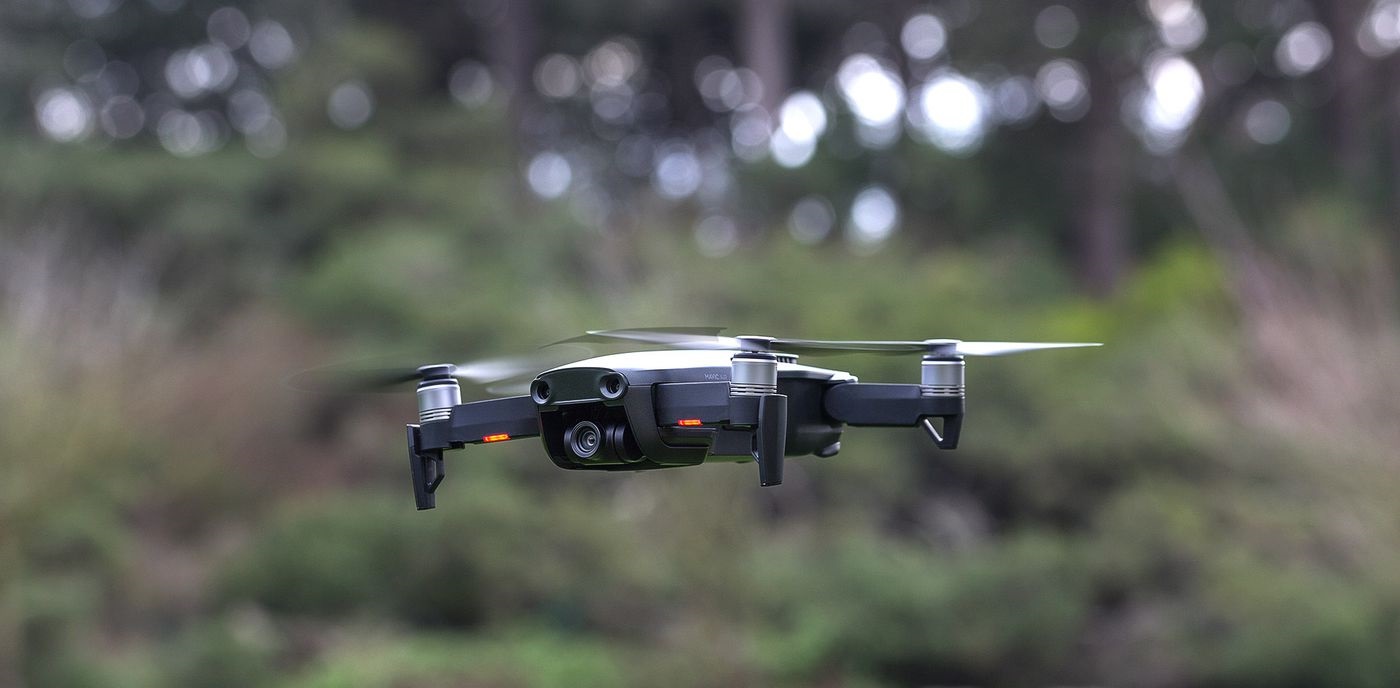Introduction
Welcome to the world of drones! With the advances in technology, drones have become increasingly popular among both hobbyists and professionals. These unmanned aerial vehicles (UAVs) have opened up a whole new realm of possibilities in various industries, from entertainment and photography to agriculture and delivery services. But with the diverse range of drones available in the market, it’s important to understand the different categories they fall into.
When it comes to regulatory purposes and classification, drones are categorized based on their intended use and capabilities. These categories serve as guidelines for the pilots and operators to comply with specific rules and regulations set by aviation authorities. Understanding the categories will not only help you determine what type of drone you own or want to purchase, but also assist you in navigating the legal requirements associated with their operation.
In this article, we’ll explore the various categories of drones and provide an overview of their primary features and applications. Whether you’re a hobbyist looking for aerial photography adventures or a business owner considering the use of drones for commercial purposes, this guide will help you understand where your drone fits in the grand scheme of things.
Regulatory Categories
Before delving into the specific types of drones, it’s essential to understand the regulatory categories that govern their operation. Aviation authorities around the world, such as the Federal Aviation Administration (FAA) in the United States and the Civil Aviation Safety Authority (CASA) in Australia, have implemented guidelines and classifications to ensure safe and responsible drone use.
1. Recreational Drones: These drones are typically used for personal enjoyment and do not involve any commercial activities. They are often flown in open spaces, parks, and designated recreation areas. Pilots operating recreational drones are required to follow specific flight regulations, such as maintaining a visual line of sight, avoiding restricted airspace, and flying under a certain altitude.
2. Commercial Drones: As the name suggests, commercial drones are used for business purposes. They can be employed in various industries, including real estate, filmmaking, surveying, and inspections. Pilots operating commercial drones must obtain proper certification and comply with specific regulations, such as obtaining a remote pilot certificate and adhering to airspace restrictions.
3. First-Person View (FPV) Drones: FPV drones are equipped with onboard cameras that provide the pilot with a real-time video feed, allowing for an immersive flying experience. These drones are often used in racing competitions and aerial cinematography. Pilots operating FPV drones need to be aware of the additional risks involved and follow regulatory guidelines, including using a spotter and operating within a designated area.
4. Racing Drones: Racing drones are specifically designed for high-speed competitions. These agile and maneuverable drones can reach incredible speeds, often exceeding 100 miles per hour. Pilots must adhere to racing guidelines and compete in controlled environments to ensure the safety of both participants and spectators.
5. Camera Drones: Camera drones are equipped with high-quality cameras and gimbals, allowing for stunning aerial photography and videography. They are commonly used by photographers, videographers, and content creators to capture breathtaking aerial shots. Pilots operating camera drones should be familiar with local privacy laws and ensure that their flights do not infringe upon the rights of others.
These regulatory categories provide a basic framework for drone operations, but it’s important to note that specific regulations may vary from country to country. It’s crucial to research and adhere to the regulations set forth by your local aviation authority to ensure a safe and responsible drone-flying experience.
Recreational Drones
Recreational drones are a popular choice among hobbyists and drone enthusiasts who fly for personal enjoyment and entertainment purposes. These drones are often equipped with basic features and are relatively easy to operate, making them accessible to a wide range of users.
One of the key aspects of flying recreational drones is to follow the specific regulations set by aviation authorities. These regulations include maintaining visual line of sight with the drone, flying below a maximum altitude (usually around 400 feet), and avoiding restricted airspace such as airports and military bases.
Recreational drones are typically used for various activities, including aerial photography, exploring scenic locations, and even participating in friendly drone races. Some users also enjoy performing aerial acrobatics and stunts with their drones, showcasing their piloting skills.
With advancements in technology, recreational drones are now equipped with features such as GPS navigation, obstacle avoidance systems, and stabilization mechanisms. These features enhance the overall flight experience and make it easier for beginners to control their drones.
It’s important for recreational drone pilots to be mindful of their surroundings and respect the privacy of others. Before flying in a specific area, it’s recommended to check for any local restrictions or permits required for recreational drone use. Additionally, it’s crucial to operate the drone responsibly and safely to prevent accidents and avoid endangering people or property.
Recreational drones come in various sizes and designs, catering to different preferences and budgets. From compact and portable drones to larger models capable of longer flights and capturing high-quality aerial footage, there is a wide range of options available in the market.
Whether you’re capturing stunning aerial shots of natural landscapes or simply enjoying the thrill of flying, recreational drones offer a unique and exciting experience for enthusiasts of all ages. As long as the regulations are followed and safety is prioritized, recreational drones can be a source of endless fun and exploration.
Commercial Drones
Commercial drones have revolutionized industries by offering efficient and cost-effective solutions for a wide range of applications. These drones are primarily used for business purposes and have become integral in sectors such as photography, filmmaking, agriculture, construction, surveying, and more.
One of the key requirements for operating commercial drones is obtaining proper certification and licenses. In many countries, pilots need to acquire a remote pilot certificate or complete a training program to ensure they have the necessary skills and knowledge to operate drones safely and legally within commercial settings.
Commercial drones are equipped with advanced features and capabilities to meet the specific needs of different industries. For example, drones used in aerial photography and videography are often equipped with high-resolution cameras, gimbals for stabilization, and intelligent flight modes for capturing professional-quality shots from unique perspectives.
Drones used in agriculture help farmers monitor crops, assess soil conditions, and spray pesticides or fertilizers. These drones are equipped with multispectral or thermal cameras, allowing farmers to detect areas of concern and provide targeted treatments, leading to more efficient farming practices.
In the construction industry, commercial drones are used for site inspections, progress monitoring, and creating 3D models. With high-resolution cameras and aerial mapping capabilities, drones enable faster data collection and provide accurate visual representations of construction sites, improving project management and reducing costs.
Another growing application of commercial drones is in the delivery industry. With companies exploring the use of unmanned aerial vehicles for package delivery, drones have the potential to revolutionize logistics and make deliveries faster and more convenient.
Commercial drone operations require adherence to strict regulations and guidelines to ensure safety and privacy. This includes following airspace restrictions, obtaining necessary permits for specific locations, respecting privacy laws, and taking precautions to prevent accidents. Responsible drone pilots take these regulations seriously to minimize risks and maintain public trust.
As technology continues to advance, commercial drones are becoming more sophisticated, with increased flight times, improved payloads, and enhanced autonomous capabilities. These advancements enable businesses to accomplish tasks more efficiently, save time and costs, and ultimately enhance their operations.
Commercial drones have opened up a world of possibilities for businesses across various industries. By harnessing the power of aerial data collection and imaging, these drones provide valuable insights, facilitate decision-making, and contribute to improved efficiency and productivity in the modern workforce.
First-Person View (FPV) Drones
First-Person View (FPV) drones offer an immersive and exhilarating flying experience by providing a real-time video feed from an onboard camera to a ground-based transmitter and display. This technology allows pilots to see exactly what the drone sees, as if they were sitting in the cockpit themselves.
FPV drones are popular among enthusiasts who enjoy racing, aerial acrobatics, and capturing unique perspectives from the air. The real-time video transmission allows pilots to navigate their drones with precision and speed, enhancing the excitement and control.
These drones are often used in organized racing events, where pilots compete against each other by maneuvering through challenging obstacle courses at high speeds. FPV racing drones are designed to prioritize agility and speed, with lightweight frames, powerful motors, and specialized flight controllers.
In addition to racing, FPV drones are also utilized in aerial cinematography and photography. They allow filmmakers and content creators to capture stunning and dynamic shots from unique angles. The ability to see the exact frame the camera captures in real-time provides precise control over the composition and ensures the desired shots are achieved.
When flying FPV drones, it’s important to adhere to specific regulations and guidelines. Pilots should always maintain a visual line of sight with their drones and fly within designated areas or racing tracks. It’s also crucial to have a spotter present to assist in ensuring the safety of the flight.
FPV drones require some level of skill and experience to operate effectively. Pilots need to be proficient in controlling the drone, navigating through obstacles, and managing the video feed. Practice, training, and knowledge of flight dynamics are essential for safely operating FPV drones.
Technology advancements have led to improvements in FPV drone systems, including better video transmission range, decreased latency, and higher-resolution cameras. These enhancements further enhance the overall FPV experience and empower pilots to push the limits of their skills and creativity.
FPV drones have opened up new possibilities for aerial exploration, competitive racing, and captivating cinematography. With the ability to immerse oneself in the drone’s perspective, FPV drones offer a thrilling and dynamic way to experience the skies from a whole new angle.
Racing Drones
Racing drones have taken the world by storm, offering an adrenaline-fueled and exhilarating experience for pilots and spectators alike. These drones are specifically designed for high-speed competitions that test the skill, agility, and precision of the pilots.
Racing drones are built to be lightweight, agile, and fast. They often feature robust frames made of carbon fiber or other durable materials, powerful brushless motors, and high-performance flight controllers. These components allow the drones to reach incredible speeds, often exceeding 100 miles per hour, while maintaining stability and maneuverability.
Racing events take place in specially designed tracks or courses, which are filled with obstacles such as gates, flags, and hurdles. Pilots navigate their drones through these tracks, showcasing their piloting skills by performing daring maneuvers, tight turns, and quick accelerations.
One of the unique aspects of racing drones is the use of First-Person View (FPV). Pilots wear FPV goggles that provide a real-time video feed from the drone’s onboard camera. This immersive view gives pilots a cockpit-like experience, allowing them to see and control the drone as if they were flying inside it.
Competitive racing leagues and events have emerged worldwide, attracting skilled pilots who compete for prizes, recognition, and the thrill of the sport. These events not only showcase the talent of the pilots but also foster a sense of community and camaraderie among enthusiasts.
Joining the racing drone community requires practice, dedication, and continuous improvement of piloting skills. Pilots often spend countless hours honing their technique, familiarizing themselves with the characteristics of their drones, and mastering different racing strategies.
While racing drones offer an exciting sport, safety remains a top priority. Organized racing events enforce strict rules and guidelines to ensure the safety of participants and spectators. Pilots are required to follow designated flight paths, maintain a clear line of sight, and fly within approved areas to minimize the risks associated with high-speed racing.
Racing drones have sparked a new wave of innovation in drone technology. Companies and enthusiasts constantly push the boundaries to develop faster, more agile, and reliable racing drones. With each advancement, the sport evolves, allowing pilots to experiment with new techniques and challenges.
Whether you’re a seasoned pilot looking to compete in thrilling races or a spectator captivated by the adrenaline of the sport, racing drones continue to captivate audiences and provide an electrifying experience that pushes the limits of aerial excitement.
Camera Drones
Camera drones have revolutionized the world of aerial photography and videography, allowing photographers, filmmakers, and content creators to capture breathtaking shots from unique angles and perspectives. These drones are equipped with high-quality cameras and stabilization systems, making them a valuable tool for capturing stunning aerial imagery.
One of the key features of camera drones is the ability to capture high-resolution photos and videos from the air. The quality and clarity of the footage depend on the camera specifications, including image sensor size, resolution, and lens quality. Camera drones also offer various shooting modes, such as manual control, automatic stabilization, and intelligent flight modes, giving pilots flexibility and creative control over their shots.
The stabilization systems on camera drones, such as gimbals, ensure smooth and steady footage, even in windy conditions or during fast maneuvers. This feature is especially important for professional cinematography, where stability is crucial for producing high-quality videos with cinematic effects.
Aerial photography with camera drones allows photographers to capture unique and stunning perspectives that were once only achievable from helicopters or planes. From breathtaking landscapes and architectural wonders to action sports and events, camera drones offer endless possibilities for capturing stunning imagery.
In addition to photography, camera drones have become an essential tool in filmmaking. The ability to capture aerial footage adds a cinematic dimension to movies, documentaries, and commercials. Filmmakers can now introduce captivating drone shots that provide a bird’s-eye view, dramatic reveals, and sweeping panoramic footage to their storytelling.
It’s important for camera drone pilots to respect privacy and follow local regulations. Understanding and adhering to specific flight restrictions and privacy laws is essential to ensure a responsible and legal operation. Pilots should also be mindful of their surroundings, avoid flying over restricted areas such as airports or sensitive locations, and respect the privacy of individuals on the ground.
As technology continues to advance, camera drones are becoming more versatile, compact, and user-friendly. Drones with foldable designs and intelligent flight features have made it easier for photographers and videographers to take their equipment to remote locations and capture stunning shots without compromising quality or convenience.
The use of camera drones is not limited to professionals. Hobbyists and enthusiasts can also enjoy exploring their creativity through aerial photography and videography. With user-friendly interfaces and advancements in automation, camera drones have become accessible to a wider audience, enabling anyone to capture stunning aerial imagery effortlessly.
Camera drones have transformed the way we capture and experience the world. By offering a unique perspective from the air, these drones have opened up endless creative possibilities for photographers, filmmakers, and enthusiasts alike, capturing moments from a whole new angle.
Toy Drones
Toy drones have gained immense popularity among children and enthusiasts of all ages, offering a fun and accessible entry point into the world of drones. These drones are designed with simplicity and entertainment in mind, making them ideal for beginners or those looking for a recreational flying experience.
One of the main characteristics of toy drones is their affordability. They are generally more budget-friendly compared to advanced professional or consumer-grade drones. This affordability makes them a great option for those who want to experience the joy of flying a drone without breaking the bank.
Toy drones are often small and lightweight, making them easy to fly indoors or in confined spaces. They typically feature intuitive controls and stabilization systems that help ensure a smooth and stable flight experience. Some toy drones even have built-in safety features such as propeller guards to protect both the drone and the surroundings during flight.
While toy drones may not have the advanced capabilities or high-resolution cameras found in professional drones, they still offer fun features such as altitude hold, flips, and LED lights. These features contribute to the enjoyment and excitement of flying, allowing users to perform stunts and capture attention-grabbing aerial maneuvers.
Toy drones are often favored by children as they provide a hands-on learning experience in aviation, hand-eye coordination, and problem-solving skills. Flying toy drones can also promote creativity and imagination, as users can create their own aerial adventures and explore their surroundings from a new perspective.
Many toy drones come with accompanied mobile apps or remote controllers, allowing users to control the drone and access additional features. These apps may include flight tutorials, customizable settings, and mini-games, adding an interactive element to the drone flying experience.
It’s important to note that toy drones are not intended for commercial use or professional-grade tasks. They are primarily designed for recreational flying and may have limitations in flight time, range, and overall performance. However, they still provide an enjoyable and accessible entry point for those interested in the world of drones.
Operating toy drones requires responsible piloting. Users should familiarize themselves with local regulations and guidelines, fly in safe areas away from people and property, and always maintain a line of sight with the drone. By adhering to these practices, users can ensure a safe and enjoyable flying experience.
Toy drones offer an exciting and affordable means of experiencing the thrill of flying. Whether it’s flying around the backyard, exploring new environments, or engaging in friendly competitions, toy drones provide a gateway into the world of drones and inspire a sense of wonder and excitement for the whole family.
Military Drones
Military drones, also known as unmanned aerial vehicles (UAVs), have rapidly transformed modern military operations. These sophisticated unmanned aircraft play a crucial role in various military activities, providing intelligence, surveillance, reconnaissance, and even tactical capabilities.
Military drones are designed to perform missions in environments that may be too dangerous or hostile for manned aircraft or ground forces. They are equipped with state-of-the-art technology, including high-resolution cameras, infrared sensors, radar systems, and advanced communication equipment.
The primary function of military drones is to gather real-time intelligence and surveillance data. They can be deployed to monitor enemy activities, provide situational awareness, and gather crucial information for strategic decision-making. Military drones have revolutionized the way military forces gain and analyze information on the battlefield, improving operational effectiveness and reducing risks to personnel.
In addition to intelligence gathering, military drones are also utilized for targeting and precision strikes. Armed UAVs can carry and deliver guided missiles or other munitions to engage hostile targets with high precision and minimal collateral damage. These combat capabilities provide military forces with enhanced firepower and the ability to strike targets remotely.
Military drones offer several advantages over manned aircraft. They can fly for extended periods without the need to accommodate human pilots, allowing them to conduct long-duration missions and gather vital intelligence over extended areas. Furthermore, the use of unmanned systems reduces the risk to human life, as operators can remotely control the drones from safer locations.
Military drone technology continues to advance rapidly. Ongoing research and development focus on improving autonomous capabilities, increasing payload capacity, and enhancing communication and data-sharing capabilities. These advancements enable military drones to operate more effectively in complex and contested environments, providing a significant advantage in modern warfare.
However, the use of military drones also comes with ethical and legal considerations. It is important to ensure that their use adheres to international laws, including respecting the sovereignty of other nations and minimizing civilian casualties.
Despite the controversy surrounding their use, military drones have become a vital asset for modern defense forces. Their ability to gather intelligence, conduct surveillance, and carry out targeted operations with reduced risk to human lives makes them an invaluable tool in safeguarding national security and protecting military personnel.
Agricultural Drones
Agricultural drones, also known as agr-drones or ag-drones, have revolutionized the way farmers approach crop management and agricultural practices. These unmanned aerial vehicles (UAVs) offer a range of applications that enhance efficiency, productivity, and sustainability in the agricultural industry.
Agricultural drones are equipped with various sensors, including multispectral or thermal cameras, LiDAR (Light Detection and Ranging) technology, and GPS systems. These sensors provide valuable information about crop health, soil conditions, and environmental factors that can affect plant growth.
One of the primary uses of agricultural drones is crop monitoring. Drones can capture high-resolution images or collect data on crop health and growth patterns. By analyzing this data, farmers can identify areas of concern, detect signs of pests, diseases, or nutrient deficiencies, and implement targeted interventions to optimize crop yields.
Precision agriculture is another key benefit of agricultural drones. By using GPS and mapping technology, drones can precisely navigate and cover large areas of farmland. This allows for targeted and efficient application of fertilizers, pesticides, and irrigation. By applying these resources only where they are needed, farmers can minimize waste, reduce costs, and minimize the environmental impact.
Agricultural drones are also utilized for crop spraying or precision spraying. Equipped with specialized spraying systems, drones can accurately and efficiently apply pesticides, herbicides, or fertilizers to specific areas of the field. This targeted approach minimizes chemical exposure and reduces the amount of chemicals released into the environment.
Mapping and data analysis are essential components of agricultural drone operations. Drones can capture high-quality aerial imagery and create detailed maps or 3D models of the farmland. These maps can provide insights on soil variability, plant health, and yield estimation, helping farmers make informed decisions and implement precise farming practices.
In addition to crop monitoring and spraying, agricultural drones can assist in livestock management by monitoring livestock movement, detecting disease outbreaks, and identifying areas of concern within the grazing area. This data helps farmers optimize their livestock management practices, leading to better animal health and overall productivity.
Adoption of agricultural drones allows farmers to improve their overall operational efficiency, reduce costs, and ensure sustainable practices. By using real-time data and insights provided by drones, farmers can make timely and informed decisions, optimize resource allocation, and increase crop yields.
As agricultural drone technology continues to advance, we can expect improved flight times, better sensor capabilities, and enhanced data analysis. This will further empower farmers to embrace precision agriculture and make data-driven decisions to maximize productivity while minimizing environmental impacts.
Delivery Drones
Delivery drones have emerged as an innovative solution to transform the way goods and packages are transported and delivered. These unmanned aerial vehicles (UAVs) offer the potential to revolutionize the logistics and transportation industry by providing faster, more efficient, and environmentally friendly delivery methods.
Delivery drones are designed to carry and transport small packages or goods from one location to another. They are equipped with advanced navigational systems, obstacle detection sensors, and payload compartments to securely transport items during flight.
One of the main advantages of delivery drones is their ability to navigate through urban areas and reach destinations that may be difficult or time-consuming to access by traditional methods of transportation. Drones can bypass traffic congestion and deliver packages directly to the recipient’s location, reducing delivery times and improving overall efficiency.
While delivery drones are primarily associated with eCommerce and package delivery, their applications expand beyond that. They can play a significant role in emergency situations, delivering medical supplies, first aid kits, or other essential items to remote or disaster-stricken areas where access may be challenging.
Regulatory bodies and companies are actively working to develop and implement guidelines for the safe and practical operation of delivery drones. These guidelines typically address issues such as flight restrictions, weight limitations, safety measures, and privacy concerns to ensure the responsible and secure deployment of delivery drone systems.
Although delivery drones offer numerous benefits, there are still challenges to overcome. Factors such as flight range limitations, payload capacity, and adverse weather conditions can impact their effectiveness. Additionally, the integration of delivery drones into existing airspace infrastructure requires careful planning and coordination to ensure safe operations along with traditional manned aircraft and other airspace users.
Companies in various sectors, including eCommerce giants and logistics companies, are actively exploring and investing in delivery drone technology. They aim to develop efficient and cost-effective systems that can handle the logistics of last-mile delivery, improving customer satisfaction and reducing the environmental impact of traditional delivery methods.
As technology continues to advance, delivery drones are becoming more sophisticated, with longer flight times, increased payload capacities, and improved navigation capabilities. These advancements are paving the way for larger-scale implementation of delivery drones, promising faster and more convenient deliveries for consumers worldwide.
While delivery drones are not yet ubiquitous, their potential to transform the delivery industry is undeniable. As they continue to evolve and regulations become more refined, delivery drones have the potential to revolutionize logistics, making deliveries faster, more efficient, and environmentally friendly.
Autonomous Drones
Autonomous drones are the next frontier in drone technology, navigating and operating with minimal or no human intervention. These unmanned aerial vehicles (UAVs) are equipped with advanced sensors, artificial intelligence, and machine learning capabilities, enabling them to perform tasks autonomously.
The primary feature of autonomous drones is their ability to operate and make decisions without continuous human control. They can perform complex tasks, such as mapping, surveying, inspection, and even package delivery, with minimal human intervention.
Autonomous drones incorporate a range of sensors, including cameras, LiDAR (Light Detection and Ranging), GPS, and obstacle detection systems. These sensors enable drones to navigate the environment, detect and avoid obstacles, and make real-time adjustments to their flight path.
Machine learning algorithms play a vital role in the autonomy of these drones. They allow drones to analyze data, learn from past experiences, and adapt their behavior accordingly. This capability enables the drones to continually improve their performance and make more precise decisions over time.
The applications of autonomous drones are vast, with potential uses in various industries. In agriculture, autonomous drones can autonomously survey and monitor crops, detect signs of disease or nutrient deficiencies, and optimize irrigation and fertilization processes.
In infrastructure and construction, autonomous drones can conduct aerial inspections of buildings, bridges, and other structures. They can quickly and accurately identify any damages or potential issues, allowing for proactive maintenance and timely repairs.
Autonomous drones also have significant potential in search and rescue operations. Equipped with thermal cameras and advanced mapping capabilities, they can help locate missing persons or navigate through hazardous environments that may be inaccessible or too dangerous for human rescuers.
As with any advanced technology, safety is a critical consideration in the development and operation of autonomous drones. Regulations and guidelines governing the use of these drones ensure they are deployed responsibly and safely, minimizing risks to both the drones and the surrounding environment.
While significant progress has been made in autonomous drone technology, there are still challenges to overcome. Ensuring reliable and efficient communication and control systems, addressing cybersecurity concerns, and refining the decision-making algorithms are areas that require ongoing research and development.
As technology continues to advance, autonomous drones have the potential to reshape industries, improve efficiency, and push the boundaries of what is possible with unmanned aerial vehicles. Their ability to perform tasks with high precision, adaptability, and reduced intervention holds immense promise for the future of drones and their impact on various sectors.
Conclusion
In conclusion, drones have become a ubiquitous presence in today’s world, with various categories catering to a range of applications. Whether you’re a recreational user, a professional photographer, a farmer, or a military operator, there is a drone designed to suit your needs and enhance your capabilities.
We explored the different regulatory categories that classify drones based on their purpose and use. From recreational drones for personal enjoyment to commercial drones used for business purposes, each category comes with its own set of guidelines and regulations to ensure safe and responsible operation.
The recreational category allows hobbyists to experience the joy of flying and aerial exploration, while commercial drones facilitate real-world applications such as aerial photography, inspections, and delivery services.
Specialized categories like First-Person View (FPV) and racing drones cater to the thrill-seeking enthusiasts who enjoy immersive and high-speed flying experiences. Camera drones have revolutionized aerial photography and cinematography, offering stunning perspectives and adding a cinematic touch to videos and films.
In agriculture, agricultural drones have transformed farming practices, enabling farmers to monitor crops and optimize resource usage for increased productivity and sustainability.
Military drones are invaluable assets in defense and security operations, providing intelligence, surveillance, and tactical capabilities in remote or hazardous environments, while delivery drones show promise in transforming logistics and last-mile deliveries.
Lastly, the advancement of autonomous drones presents a future where drones can accomplish tasks with minimal human intervention, revolutionizing industries such as agriculture, infrastructure, and search and rescue.
As technology continues to evolve, drones will continue to play an increasingly important role in various sectors of society. It is essential for drone operators to stay informed about the regulations and guidelines set forth by aviation authorities and to adhere to responsible and safe operation practices.
Whether you’re a recreational user enjoying the freedom of flight or a professional utilizing drones to enhance your business, understanding the different categories and the possibilities they offer will help you make informed decisions and maximize the benefits of this remarkable technology.
With continuous advancements, drones have undoubtedly changed the way we see and interact with the world. Their potential for innovation and growth is limitless, and it’s an exciting time to be part of the ever-expanding world of drones.







